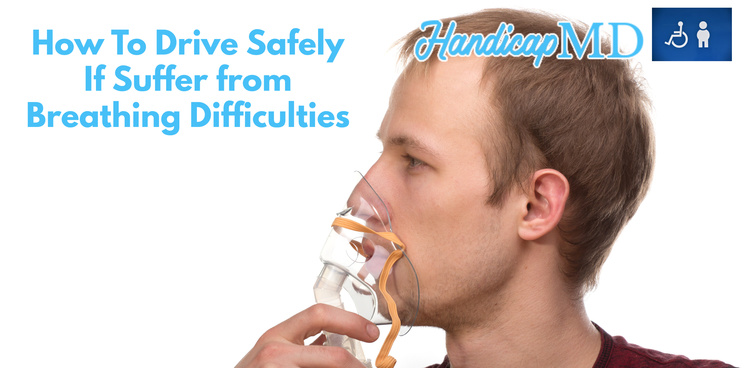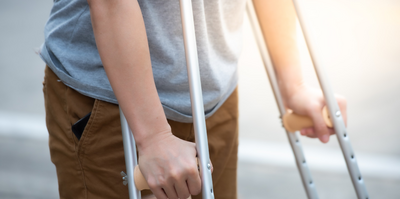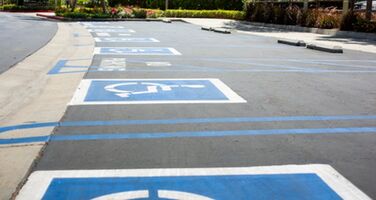
Explore Some Ways To Drive Safely If You Suffer from Breathing Difficulties
Driving is an activity that requires constant attention and focus. Due to breathing difficulties, this may become difficult because sufferers tend to lose their breaths quickly, especially when driving at high speeds. Some drivers pass out due to the lack of oxygen in the bloodstream.
Some of the conditions that can cause breathing difficulties include; Asthma, Emphysema, COPD, Bronchitis, etc. These conditions can affect your breathing either temporarily or for an extended period.
Medical content reviewed by Dr Eric Jackson-Scott MD, Chief Medical Officer
 If you suffer from breathing difficulties, you will need to take extra precautions to drive safely;
If you suffer from breathing difficulties, you will need to take extra precautions to drive safely;
1. Remember to take your medications on time
If you have breathing difficulties, this means that your medication dosage is proportionately higher than usual. If you forget to take your medications before driving, the lack of medicines in the bloodstream will make it harder to move. The risk of passing out while driving is higher if you do not take your medication precisely as prescribed.
2. Minimize distractions during driving
Distractions while driving include the radio, cell phone, smoking, eating and drinking, etc. If you have breathing difficulties, minimize these extra activities to prevent losing your attention on the road. Make sure that you are aware of any potential distractions during your ride to avoid them.
3. Use the air conditioner to feel better while driving
Driving can be taxing on people with breathing difficulties because they tend to breathe heavily. The air conditioning will help you take in the right amount of oxygen without feeling exhausted from your journey.
If you cannot afford an air conditioner in your car, ensure that you roll down the windows to maximize air intake. Also, wear loose clothes when driving for better ventilation.
4. Drive at low speeds
Driving very slowly will make it easier for you to handle your breathing difficulties. Speed bumps, stoplights, and frequent turns can cause your car to vibrate, resulting in the disruption of your breathing pattern.
Driving continuously on big highways can be exhausting because of the amount of air needed to keep up with high speeds; therefore, it is best to drive slowly and steadily.
Driving slowly will give you ample time to identify all potential hazards on the road and consider them when making decisions about your next move.
5. Get enough breaks while driving
People with breathing difficulties should rest whenever they need it to avoid feeling extremely tired during the journey.
Do not push yourself just because you want to reach your destination immediately. Ensure that you are aware of how your body feels at all times to avoid any potential injuries while driving.
6. Maintain a safe distance from other vehicles at all times
Driving near can become dangerous if you have breathing difficulties because it will be harder to stop in time. Always keep your eyes on the road and maintain a safe distance from other vehicles, no matter how familiar the other drivers may look.
7. Check your physical condition before driving
People with breathing difficulties should check their physical conditions to avoid accidents while on the road. If possible, it is best to avoid driving when feeling sick because it will be harder for you to concentrate on your journey if you are not feeling well.
8. Get a Disabled parking permit
Disability parking permits allow people with special needs or disabilities to park in reserved spaces for them. This makes it easier for these individuals to get into and out of their vehicles, which is helpful if you have breathing difficulties. It will make it easier for you to get out of the car in case of any breathing difficulties.
9. Keep emergency numbers in your car
If you have breathing difficulties, it is best to keep emergency numbers on your mobile phone so that you can quickly call for help when necessary. In case of an emergency, drive carefully towards the nearest hospital or police station.
Summing Up
Driving with breathing difficulties does not have to be highly challenging as long as you know your limits and the precautions you need to take. Remember to check how you feel before hitting the road to avoid getting tired or sick while driving. Do not forget that taking breaks is essential for driving, especially for individuals who have breathing difficulties.
 If you are suffering from breathing difficulties and need to a handicap parking placard online - direct pay - no insurance needed - click below get started here
If you are suffering from breathing difficulties and need to a handicap parking placard online - direct pay - no insurance needed - click below get started here
.png)





